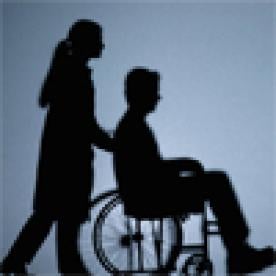Presently, chronic traumatic encephalopathy (CTE) can only be diagnosed pathologically. However, there are research efforts, such as the “Understanding Neurological Injury and Traumatic Encephalopathy (UNITE) Study” that are investigating ways to diagnose CTE during an individual’s life. A recent article published in JAMA Neurology on January 4, 2016 released a case report entitled “Pathologically confirmed chronic traumatic encephalopathy in a 25-year old former college football player” by Jesse Mez, MD, MS, Todd M. Solomon, PhD, Daniel H. Daneshvar, MA,Thor D. Stein, MD, PhD, and Ann C. McKee, MD.
The case report examined a 25-year-old man with congenital bicuspid aorta valve and a family history of addiction and depression who died of a cardiac arrest secondary to staphylococcus aureus endocarditis. He had played football for sixteen years, beginning at age 6. He also played three years of Division I college football as a linebacker and special teams player, before he stopped playing football in the beginning of his junior season due to ongoing post-concussive symptoms. He had experienced over ten concussions while playing football, the first occurring at the age of 8. He had problems with headaches, neck pain, blurry vision, tinnitus, insomnia, anxiety, and difficulty with memory and concentration. He had been an excellent student in high school (3.8 GPA) and in the beginning of college. He left school with a GPA of 1.9, just twelve credits short of earning his bachelor degree.
Neuropsychological testing showed he had a full IQ score of 101. His memory score on Logical Memory I and II was 8, low average, on both tests. On the California Verbal Learning Test (CVLT-II) he was in the impaired range on all trials except for trial one, in which he was borderline (4). His BVMT-R was in the average range. His language on the BNT-2 was impaired. On attention and executive functioning, he was high average on trail making Part A, but impaired on Part B. On symbol digit modality’s test, he ranked as impaired in the written portion, while in the low average range on oral. Stroop color and word tests were in the average range.
The summary of his neuropsychological testing found “intelligence was average and reading ability was commensurate. Visuospatia abilities were also average. There were deficits in verbal episodic encoding, although verbal episodic retrieval and visual memory were intact. There were deficits in set-shifting and processing speed. Selective attention was intact. There were deficits in naming. Letter and category fluency were intact.
Neuropathological findings of CTE were found. His brain showed mild ventricular dilation and hippocampal atrophy. Pathological legions of hyperphosphorylated tau (PTAU) comprising neurofibrillary tangles, neuritis, and astrocytes around small blood vessels were found at the sulcal depths of the frontal and temporal lobes. Characteristic CTE ptau pathology was also found in the parietal lobes, entorhinal cortex, anterior hypothalamus, nucleus basalis of Meynert substania nigra, locus coeruleus and median raphe.”
The researchers found, “while proposed clinical research criteria for CTE include impairment in memory and executive function on neuropsychological testing, to our knowledge this is the first published case of pathologically confirmed CTE to include a neuropsychological test profile. It remains to be determined whether impairments in learning an executive function with preserved verbal episodic retrieval is a common presentation of CTE.”



 i
i


